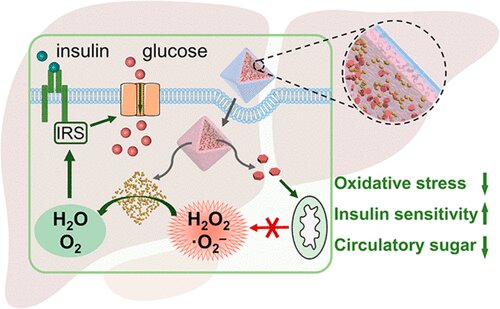Biodegradable nanoscavengers can reverse insulin resistance in liver cells to treat type 2 diabetes
Date: 17.5.2023
Although diabetes is a common condition, no cure exists yet. Current therapies can manage blood sugar levels, but they do not address insulin resistance.
 But now, recent research reported in ACS Nano shows that targeting certain highly reactive molecules in the liver can reverse insulin resistance in human liver cells and diabetic mice, providing a pathway toward a more long-lasting treatment.
But now, recent research reported in ACS Nano shows that targeting certain highly reactive molecules in the liver can reverse insulin resistance in human liver cells and diabetic mice, providing a pathway toward a more long-lasting treatment.
Some research has suggested that insulin resistance could be caused by reactive oxygen species (ROS), which are highly unstable, oxygen-based molecules primarily produced by the mitochondria.
A class of drugs known as mitochondrial uncouplers could help inhibit ROS production at its source, rather than merely cleaning up what's already been made, as conventional, antioxidant-based treatments do. Ultrasmall platinum nanoparticles are another highly efficient ROS scavenger, though their small size causes them to be cleared from the liver too quickly.
But, by combining these two strategies into an all-in-one system, a highly effective and long-lasting treatment platform could be created. To build the nanoscavengers, the team coated a template with platinum nanoparticles and a layer of silica. Then, the template was removed to form hollow shells, which were loaded with a mitochondrial uncoupler and coated with a lipid bilayer.
The researchers then injected nanoscavengers intravenously into a diabetic mouse model. The constructs migrated to the liver, reducing the amount of fat present, restoring normal cellular function and returning blood glucose levels to normal.
Image source: Zhang et al. (2023), ACS Nano.























